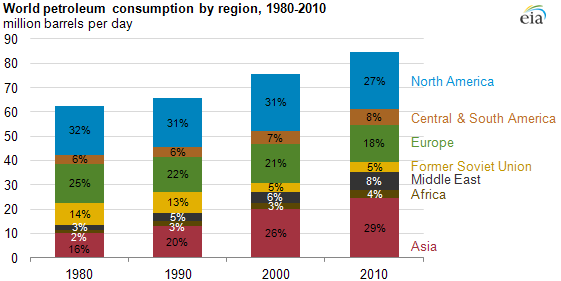The following is from the blog of Greg Mankiw. The humor that is calculating the unemployment rate in the US.
Abbott and Costello explain unemployment
Thanks to U Chicago's Allen Sanderson for sending this along:
COSTELLO: I want to talk about the unemployment rate in America.
ABBOTT: Good "subject". Terrible "times". It's about 9%.
COSTELLO: That many people are out of work?
ABBOTT: No, that's 16%.
COSTELLO: You just said 9%.
ABBOTT: 9% Unemployed.
COSTELLO: Right 9% out of work.
ABBOTT: No, that's 16%.
COSTELLO: Okay, so it's 16% unemployed.
ABBOTT: No, that's 9%...
COSTELLO: WAIT A MINUTE. Is it 9% or 16%?
ABBOTT: 9% are unemployed. 16% are out of work.
COSTELLO: If you are out of work you are unemployed.
ABBOTT: No, you can't count the "Out of Work" as the unemployed. You have to look for work to be unemployed.
COSTELLO: But ... they are out of work!
ABBOTT: No, you miss my point.
COSTELLO: What point?
ABBOTT: Someone who doesn't look for work, can't be counted with those who look for work. It wouldn't be fair.
COSTELLO: To who?
ABBOTT: The unemployed.
COSTELLO: But they are ALL out of work.
ABBOTT: No, the unemployed are actively looking for work...Those who are out of work stopped looking. They gave up. And, if you give up, you are no longer in the ranks of the unemployed.
COSTELLO: So if you're off the unemployment roles, that would count as less unemployment?
ABBOTT: Unemployment would go down. Absolutely!
COSTELLO: The unemployment just goes down because you don't look for work?
ABBOTT: Absolutely it goes down. That's how you get to 9%. Otherwise it would be 16%. You don't want to read about 16% unemployment do ya?
COSTELLO: That would be frightening.
ABBOTT: Absolutely.
COSTELLO: Wait, I got a question for you. That means they're two ways to bring down the unemployment number?
ABBOTT: Two ways is correct.
COSTELLO: Unemployment can go down if someone gets a job?
ABBOTT: Correct.
COSTELLO: And unemployment can also go down if you stop looking for a job?
ABBOTT: Bingo.
COSTELLO: So there are two ways to bring unemployment down, and the easier of the two is to just stop looking for work.
ABBOTT: Now you're thinking like an economist.
COSTELLO: I don't even know what the hell I just said!
COSTELLO: I want to talk about the unemployment rate in America.
ABBOTT: Good "subject". Terrible "times". It's about 9%.
COSTELLO: That many people are out of work?
ABBOTT: No, that's 16%.
COSTELLO: You just said 9%.
ABBOTT: 9% Unemployed.
COSTELLO: Right 9% out of work.
ABBOTT: No, that's 16%.
COSTELLO: Okay, so it's 16% unemployed.
ABBOTT: No, that's 9%...
COSTELLO: WAIT A MINUTE. Is it 9% or 16%?
ABBOTT: 9% are unemployed. 16% are out of work.
COSTELLO: If you are out of work you are unemployed.
ABBOTT: No, you can't count the "Out of Work" as the unemployed. You have to look for work to be unemployed.
COSTELLO: But ... they are out of work!
ABBOTT: No, you miss my point.
COSTELLO: What point?
ABBOTT: Someone who doesn't look for work, can't be counted with those who look for work. It wouldn't be fair.
COSTELLO: To who?
ABBOTT: The unemployed.
COSTELLO: But they are ALL out of work.
ABBOTT: No, the unemployed are actively looking for work...Those who are out of work stopped looking. They gave up. And, if you give up, you are no longer in the ranks of the unemployed.
COSTELLO: So if you're off the unemployment roles, that would count as less unemployment?
ABBOTT: Unemployment would go down. Absolutely!
COSTELLO: The unemployment just goes down because you don't look for work?
ABBOTT: Absolutely it goes down. That's how you get to 9%. Otherwise it would be 16%. You don't want to read about 16% unemployment do ya?
COSTELLO: That would be frightening.
ABBOTT: Absolutely.
COSTELLO: Wait, I got a question for you. That means they're two ways to bring down the unemployment number?
ABBOTT: Two ways is correct.
COSTELLO: Unemployment can go down if someone gets a job?
ABBOTT: Correct.
COSTELLO: And unemployment can also go down if you stop looking for a job?
ABBOTT: Bingo.
COSTELLO: So there are two ways to bring unemployment down, and the easier of the two is to just stop looking for work.
ABBOTT: Now you're thinking like an economist.
COSTELLO: I don't even know what the hell I just said!







